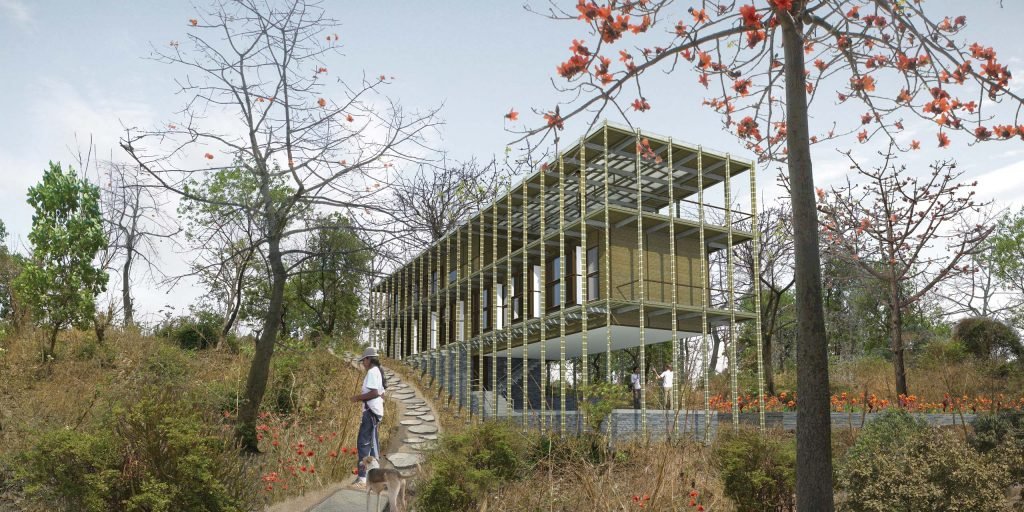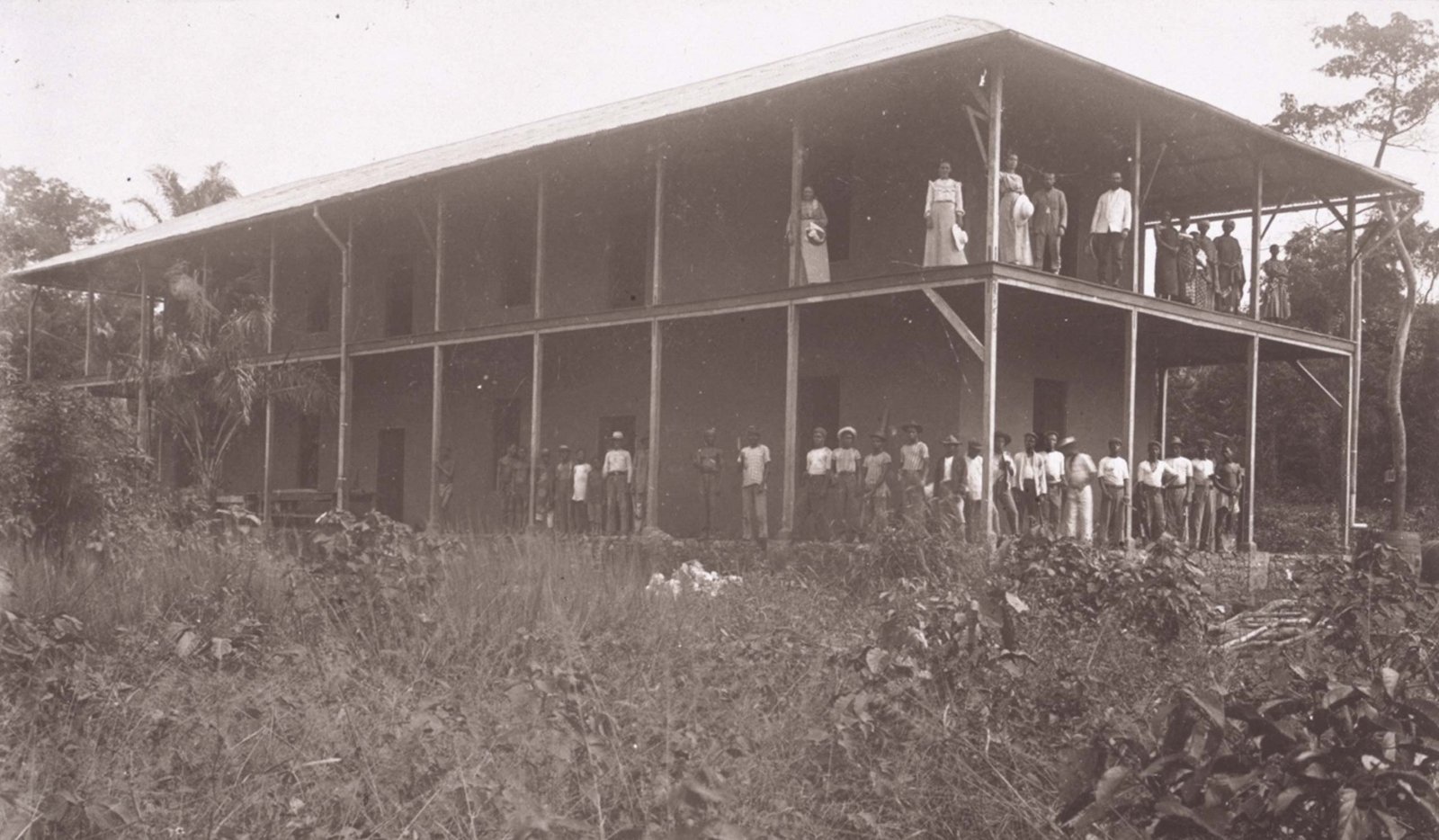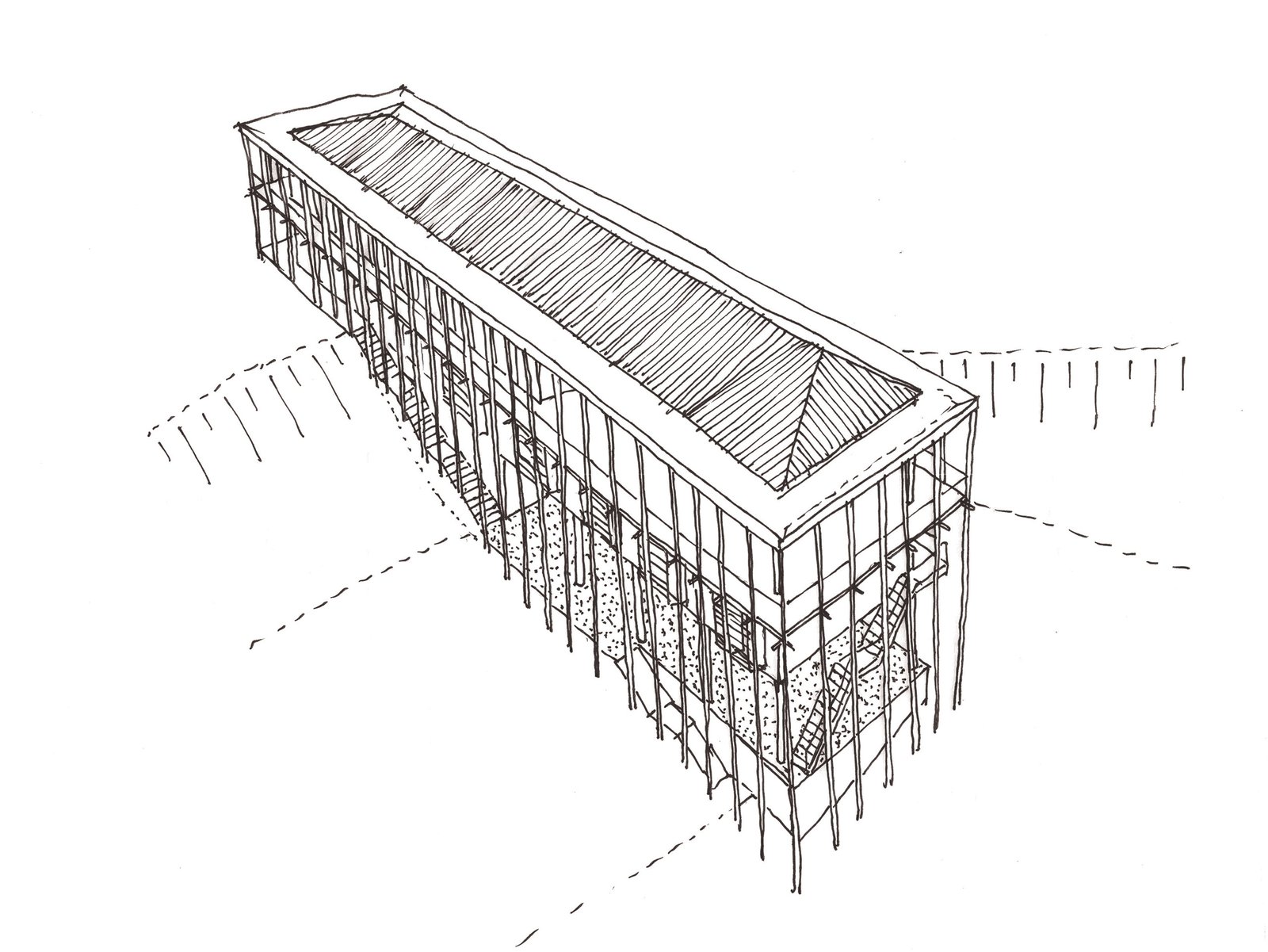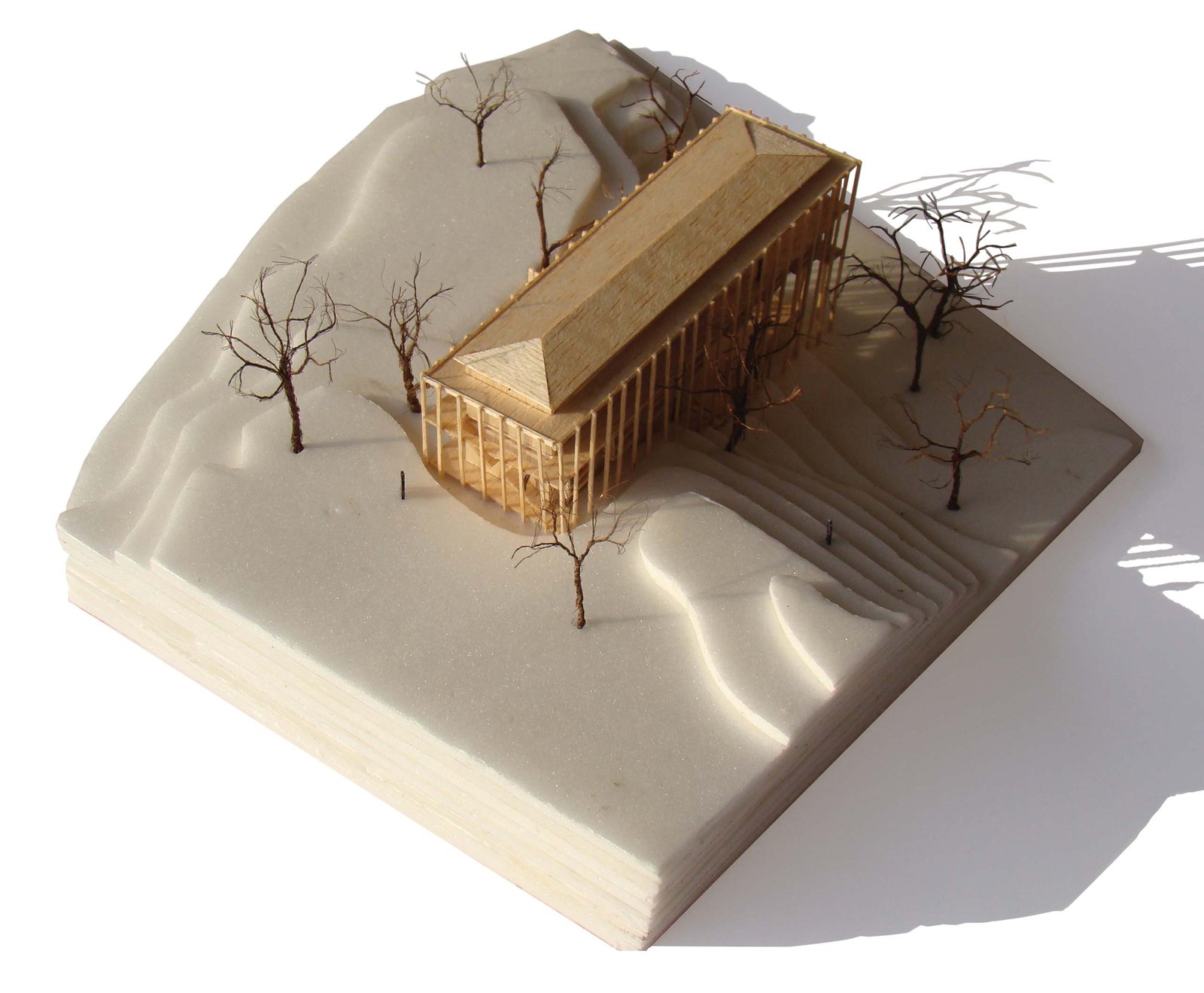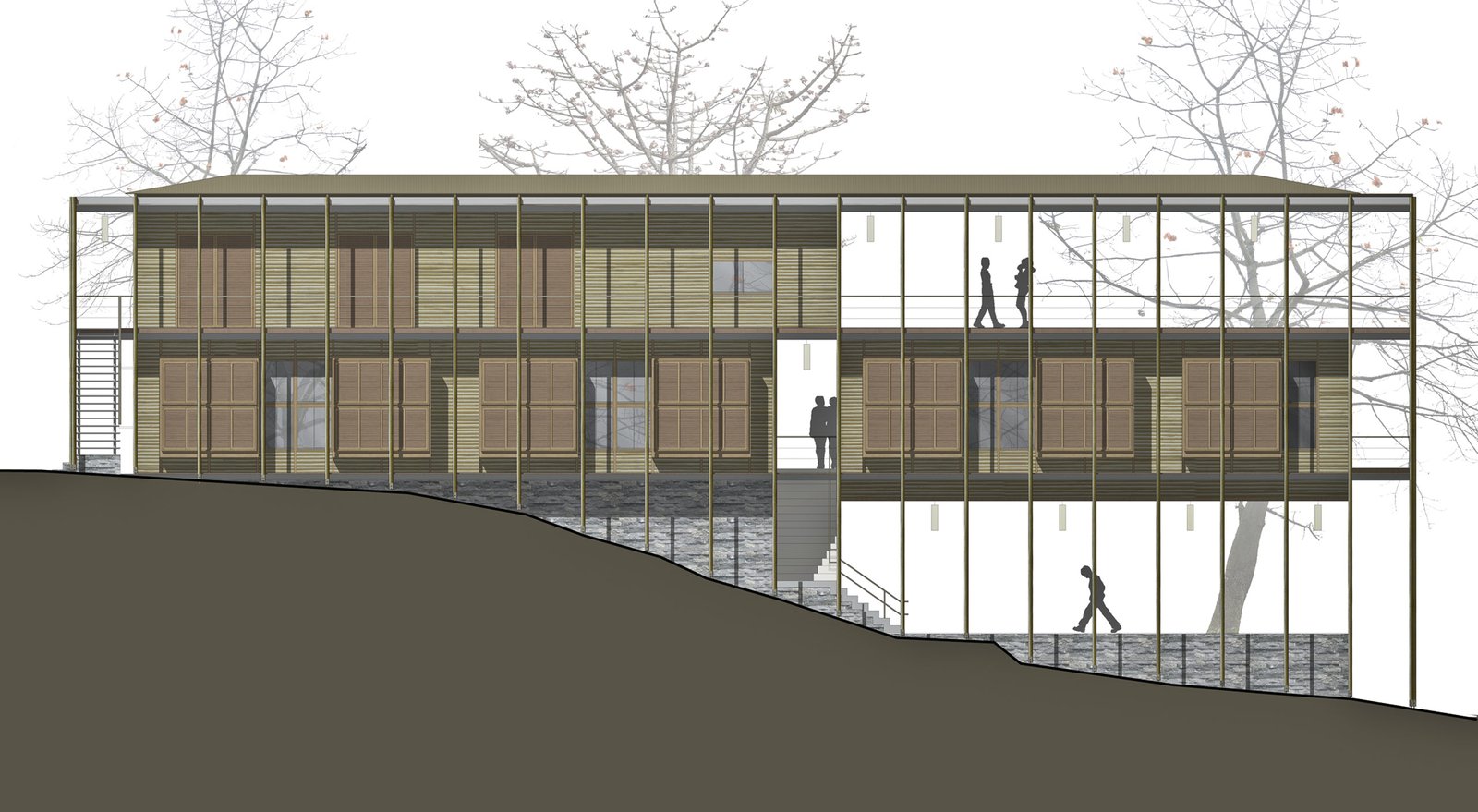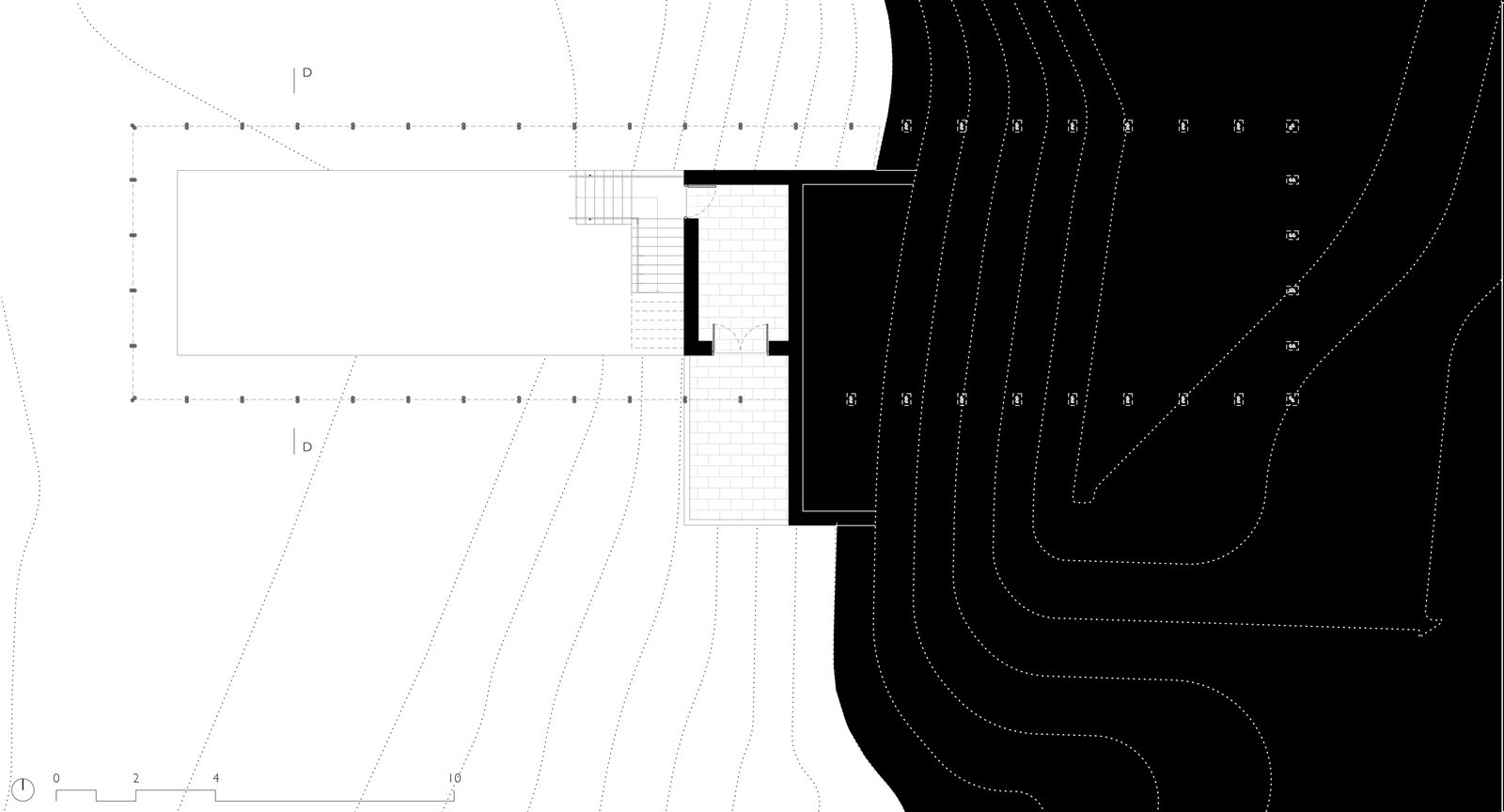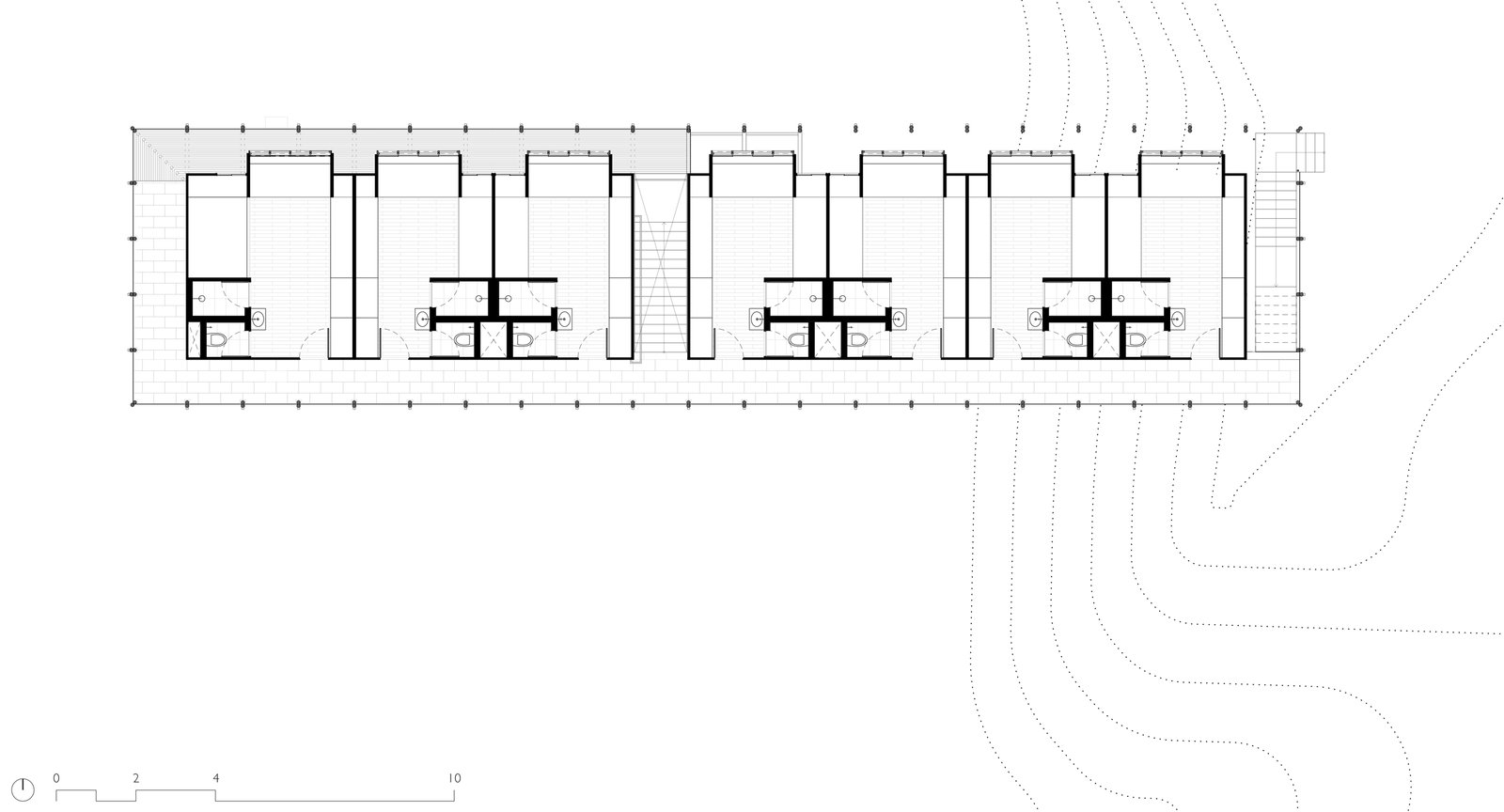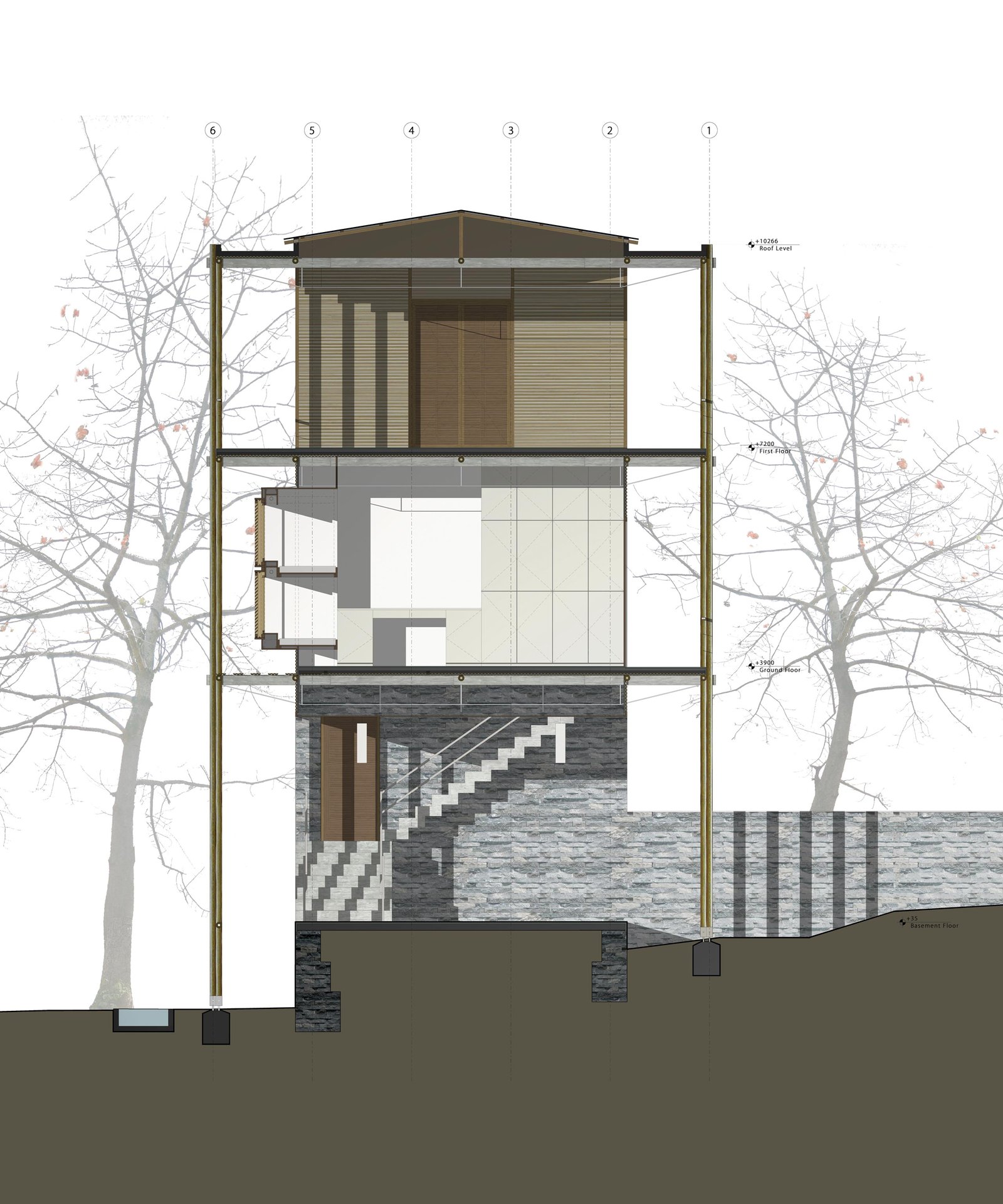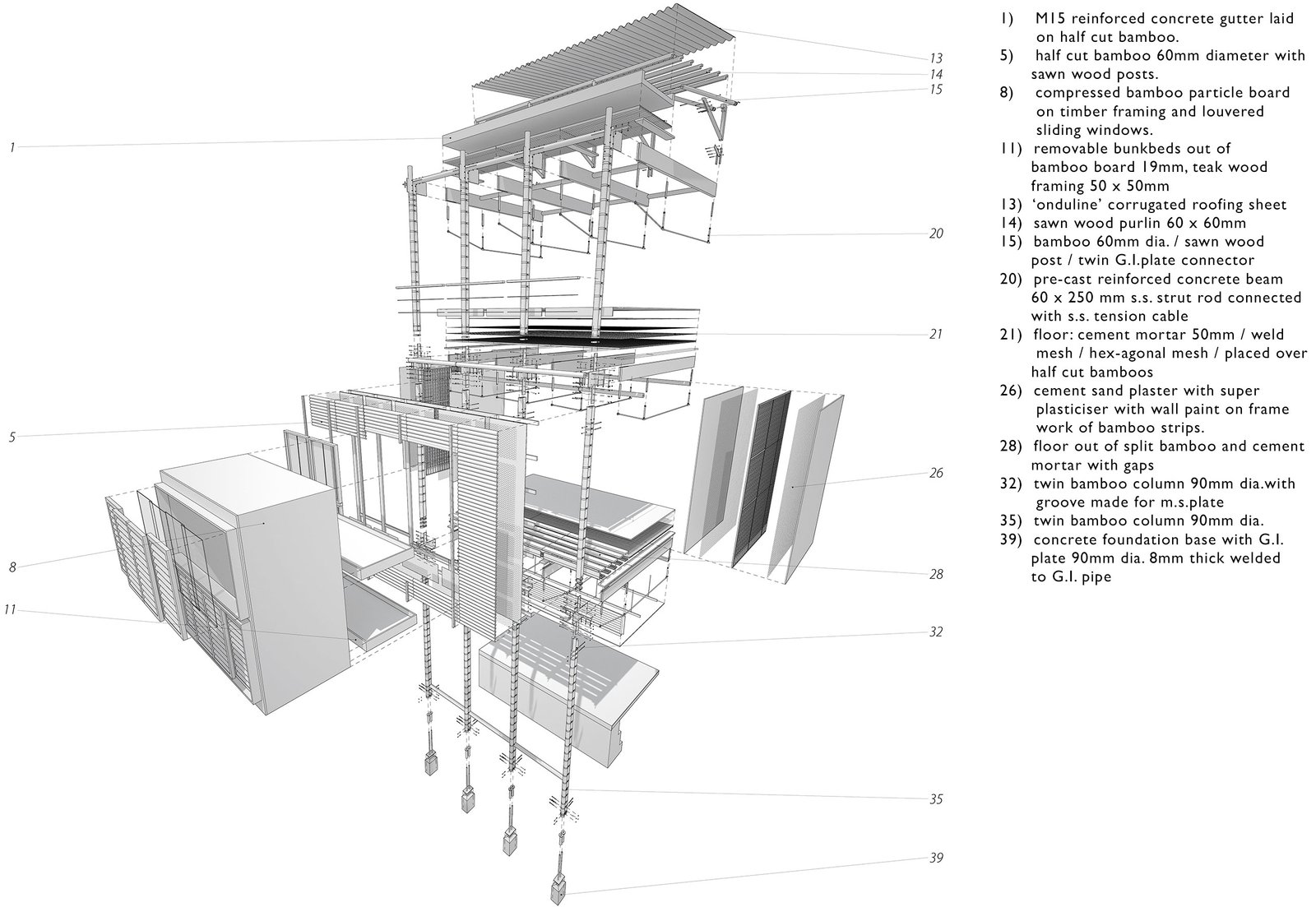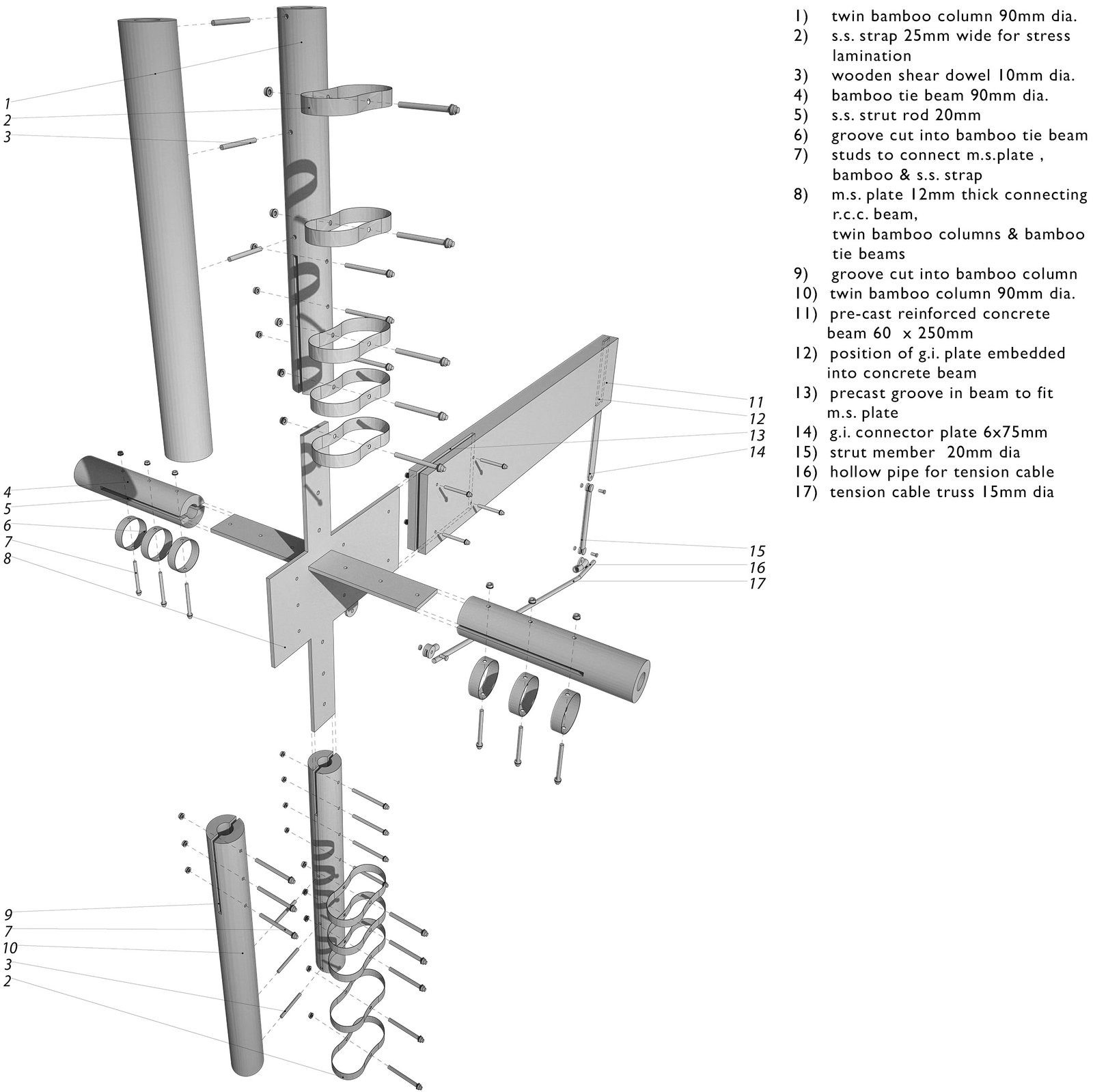- test :
- test2 :
Magic Bus Staff Dormitory
A combination of natural and local materials with innovative technologies and materials used in this dormitory for the staff at the Magic Bus Campus portrays a new construction idiom – an expression of contemporary sustainable architecture. A unique structural cage of bamboo columns wraps around the dormitory, creating a dialogue between the interior and the dramatically changing landscape.
Typology
The design of the dormitory derives its typology from a colonial missionary bungalow. This typology native to the Indian Bengali region and transformed by the British, responds to the local climate by its large shaded verandas promoting ample ventilated spaces.
A staircase cutting through the building mass breaks up the passage on the ground floor. This cut in the building frames the exterior beyond, creating interplay between inside and outside. Public circulation and verandahs occupy the interstitial spaces between the external bamboo columns and the internal mass. Bamboo, being the fastest growing grass in the world, is a high yielding renewable material resource.
The large covered verandahs and the relatively narrow width of the building envelope allow for comfortably ventilated and shaded semi-indoor spaces. With invaluable inputs from engineer Vilas Gore of GeoScience Services, innovative technologies and methods are used in order to reduce the amount of non-renewable materials throughout the building.
Project Data
Project Name
Magic Bus Staff Dormitory
Location
Year
2008
Type
Themes
Sustainability, Bamboo, Innovation
Design Team
Robert Verrijt + Shefali Balwani
Size
300 sq.m.
Program
Dorm rooms, canteen, recreation room
Publications
Exterior view of entrance side. By utilizing the steep slope an intimate low façade will face the entrance court on the forest side. A water pond positioned in a rainwater catchment area reflects the dormitory on its surface.
Exterior view of west side. A more prominent vertical façade will face the surrounding paddy fields. The stilted space below the dormitory forms an additional recreation space.
Konkan village – This typology native to the Indian Bengali region and transformed by the British, responded to the local climate by its large shaded verandas promoting ample ventilated spaces.
The design of the dormitory derives its typology from that of a colonial missionary bungalow.
Drawings
A ‘cage’ of bamboo columns wraps around the building. Public circulation and verandahs occupy the spaces between the bamboo columns and the internal mass.
The surface area that is exposed to the hot afternoon sun is minimised through the east west orientation. Rainwater falling on the roof channelled through generous gutters and collected in rainwater overhead tanks situated above the toilets.
Physical model – view 1
Physical model – view 2 The bamboo enclosure creates a dialogue between the interior and the dramatically changing landscape.
North elevation – The large covered verandahs and the relatively narrow width of the building envelope allow for comfortably ventilated and shaded semi-indoor spaces.
Basement Plan
Ground Floor Plan
First Floor Plan
Section D
Detail Sectional Model
A clearly defined material concept using bamboo for columns and walls, and natural stone and polished concrete for floors, neutralized by the whitewashed interiors gives the calm rational architectural language a sensual physical presence
Exploded View. Trusses made of pre-cast concrete and steel tension cables span between the columns. The floors are made of half cut bamboo, on which a layer of 50 mm PCC is laid, finished with a layer of natural stone.
Construction Process of bamboo column members
A steel plate, which is embedded in the pre-cast concrete beam, connects to both the lower and upper bamboo twin-column as well as the bamboo tie beams.
The columns consist of two bamboos, with a diameter of 90mm, joined together by steel strips. Dowels inserted in between the two bamboos avoid shear movements.

